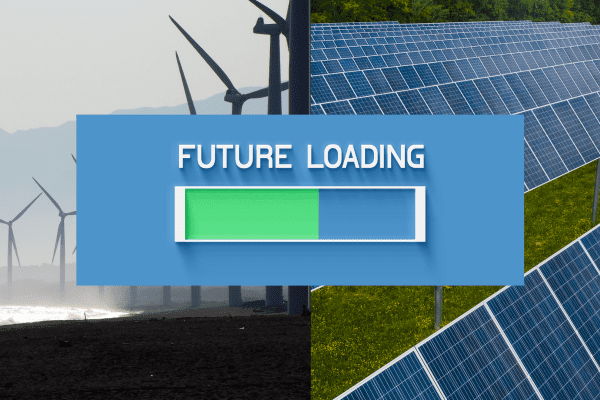Solar and Wind are Winning
Two energy reports out this week paint a clear picture of the future that may await us.

Industrial policy moves slowly. Sometimes it takes months or years to understand the trajectory of global energy trends. Picture an oil tanker that requires a herculean effort just to shift course by a small degree — that’s what energy policy feels like much of the time. But then sometimes, you get a glimpse of the future in one sudden flash.
That happened this Tuesday when two influential reports came out within hours of one another that illuminate two big trends that have been developing over time and accelerating in recent months.
One comes from the International Energy Agency which lowered its forecast for renewable energy growth in the United States over the next five years by almost 50 percent. This reflects several policy changes, the report says, “including the earlier phase out of federal tax credits, new import restrictions, the suspension of new offshore wind leasing and restricting the permitting of onshore wind and solar PV projects on federal land.” Wah-wah. Cue the trombone.
The other headline was a remarkable surge in renewable energy that seems to indicate a crucial turning point. In the first six months of the year, solar and wind energy generated more electricity than coal — a first — according to this ‘mid-year insights’ report from Ember. “Solar alone met 83 percent of the rise, with many countries setting new records,” the report says. Essentially, building solar is becoming cheaper than the dirty alternative in many places. “Fossil fuels remained mostly flat, with a slight decline,” according to the report. Judging from just how many people were sharing this news story on social media, we clearly need a break from doomerism.
Also this week, my UCLA Emmett Institute colleague Alex Wang has a timely new op-ed in the Los Angeles Times putting a finer point on these two big, related trends.
“Even Saudi Arabia, the ultimate petrostate, is embracing renewable energy and seeking to acquire half of all its electricity from clean sources by 2030,” Wang notes. Not because the desert kingdom has gone all woke, but because it’s smart economics and geo-politics. “The rise of China as the clean energy superpower and the ambitions of a country like Saudi Arabia show that the U.S. is thinking small,” writes Wang, who has a forthcoming book titled “Chinese Global Environmentalism” (Cambridge 2025). “The Trump administration seems to be thinking about the next three years while rival nations are thinking about the next three decades.”
More from Wang:
Chinese leaders saw these technologies as strategic industries of the future, and believed the country that dominated these technologies would gain economic and political advantage in the long run. Thus, clean technologies were included within China’s 2010 “Strategic Emerging Industries” policy and its “Made in China 2025” strategy. Chinese thought leaders conceived of the strategy in epochal terms. The superpower had missed out on each of the four major waves of industrialization technological change that had allowed European powers and the U.S. to become global hegemons and China’s elites and top academics were determined not to make the same mistake again. China’s Communist Party leadership saw clean technologies as part of a set of innovations, including artificial intelligence and advanced manufacturing, that were critical to Chinese modernization and global competition. That dominance in clean technologies would enable China to position itself as a leader in global climate talks; build stronger ties with Global South countries in need of cheaper, cleaner energy; and reduce choking pollution within China was only further reason to go all in on clean technologies.
Read the whole piece here.
We also know that wind and solar energy are good for U.S. consumers, despite what the White House says. A new Politico analysis of the federal government’s own data rebuts Trump’s and Energy Secretary Chris Wright’s false claims about renewables. “States that embrace renewable energy are far more likely to save money for electricity consumers than those relying on fossil fuels or nuclear power,” Zack Colman reports.
Solar and wind are killing it. The Ember report shows that the world’s thirst for electricity can increasingly be slaked by renewables. States that include solar and wind in their energy mix are seeing economic benefits. Coal is getting left in the dust. Here’s hoping that the US doesn’t get left in the dust too.







Reader Comments